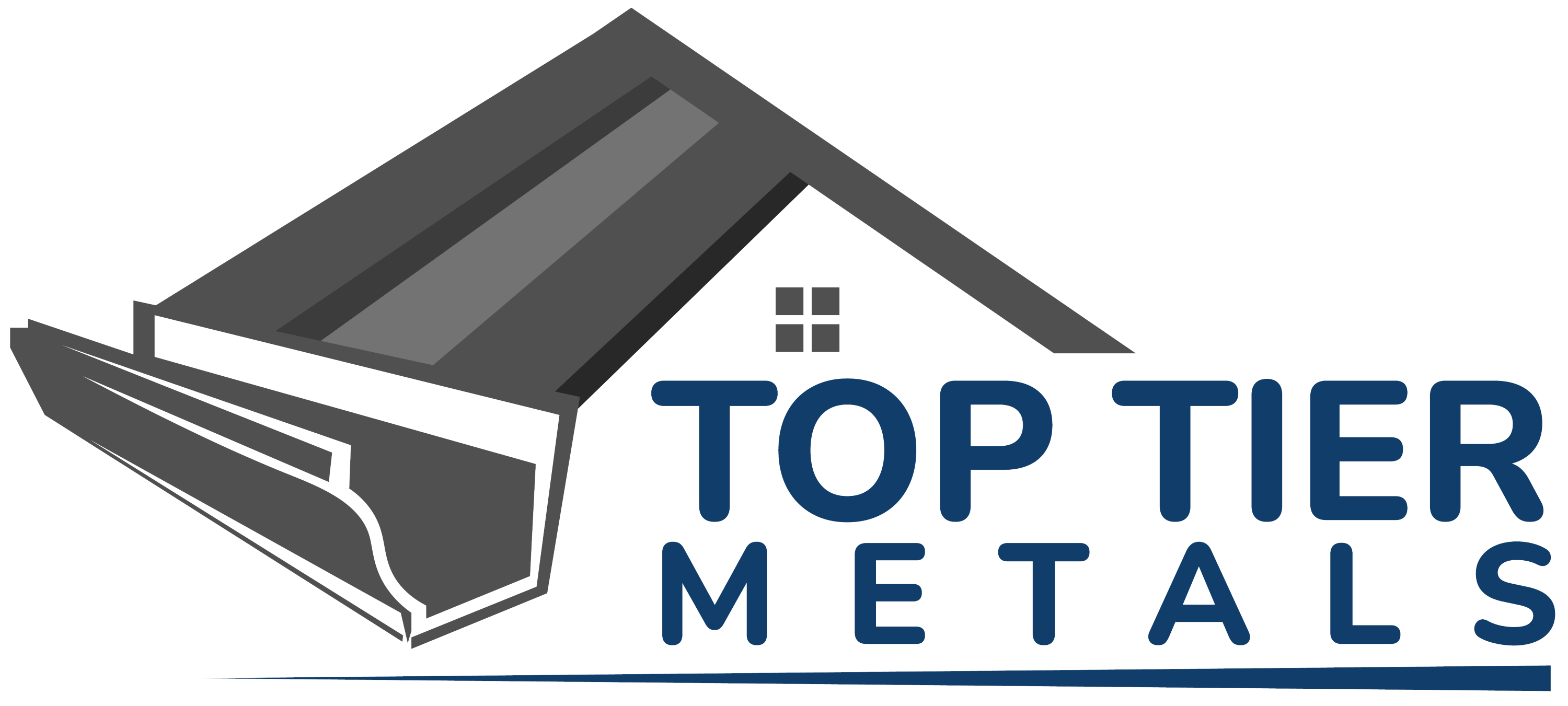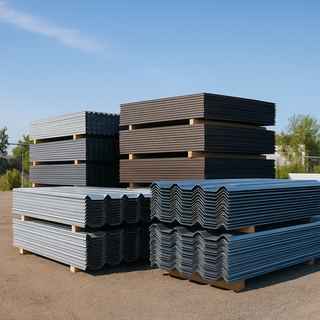Adding features like skylights, roof vents, or chimneys to a metal roof can elevate the function, comfort, and aesthetics of your space — but these roof penetrations also present the biggest risk to your roof’s long-term integrity. If not handled correctly, even a small opening can lead to leaks, corrosion, mold, and warranty voids.
This comprehensive guide from Top Tier Metals is built specifically for homeowners and DIYers working with premium metal roofing systems. Whether you're retrofitting a vent into an existing roof or planning new skylight installs during a roof build, we’ll walk you through how to do it right — safely, durably, and leak-free.
Why Roof Penetrations Require Extra Caution
Metal roofing systems, especially exposed fastener types, are engineered for precise water shedding. But anytime you cut through a panel or interrupt that flow, you’re potentially allowing moisture to get beneath the surface.
Common risks of poorly installed penetrations:
-
Water infiltration and rot
-
Ice damming in cold climates
-
Rust and corrosion of fasteners or substrate
-
Warranty voids due to improper flashing
-
Decreased energy efficiency and air sealing
Whether you’re adding a vent pipe or a full chimney chase, following the right methods matters — and it’s totally achievable even as a DIYer with the right prep and materials.
1. Planning the Placement: Avoiding Seams and Panels Edges
The first mistake many people make is cutting directly on panel seams, ribs, or close to roof edges.
Best practices for placement:
-
Avoid ribs and high seams: Place your penetration on the flat area of the panel.
-
Stay away from panel edges: Leave at least 12 inches from panel ends to avoid structural weakness and facilitate easier flashing.
-
Align with internal framing: Ensure your vent or skylight aligns with rafters or purlins to support the installation below.
-
Avoid valleys and hips: These collect water — never install penetrations in or near them.
2. Materials You’ll Need (for Most Penetrations)
Here’s what you’ll typically need when cutting into a metal roof for a skylight, vent, or chimney:
-
Appropriate flashing kit (compatible with your roof pitch and feature type)
-
High-quality sealant (polyurethane or butyl-based)
-
Pipe boot or roof jack (for circular vents or pipe penetrations)
-
Roofing screws with sealing washers
-
Metal snips, jigsaw, or hole saw
-
Tape measure and marker
-
Protective gloves and eye protection
For skylights, get manufacturer-specific flashing kits for metal roofs if available.
3. How to Add a Pipe Vent (Exhaust, Plumbing, Stove Pipe)
Step-by-step:
-
Mark the hole: Locate the vent pipe and trace its outline from above using a template or base plate.
-
Cut the hole: Use a metal hole saw or snips for clean edges.
-
Dry fit the boot: Make sure the rubber pipe boot sits flush with the roof.
-
Apply sealant: Add a thick bead of sealant under the boot base.
-
Fasten with screws: Use metal-to-metal screws with washers to secure the boot to the roof.
-
Cap and seal: Ensure the top of the boot (around the pipe) is tightly clamped and sealed.
Pro Tip: Use a flexible EPDM or silicone boot rated for UV and metal roof expansion/contraction.
4. How to Install a Skylight Without Leaks
Skylights are more complex than vents, but incredibly rewarding when installed properly.
Step-by-step:
-
Frame the opening: From inside, cut the rough opening and frame with doubled rafters or headers for structural support.
-
Dry-fit the skylight: Make sure it’s square and level before proceeding.
-
Install underlayment: Lay waterproof membrane (like Ice & Water Shield) around the opening, extending at least 6–12 inches.
-
Install skylight base: Set the skylight and secure per manufacturer instructions.
-
Flash in layers: Use a step flashing kit made for metal roofs. Flash the bottom first, then sides, then top. Each layer should overlap the one below.
-
Seal all edges: Use high-quality sealant under flashing and along joints.
Pro Tip: For low-slope roofs, always use a curb-mounted skylight rather than deck-mounted, and check that it's rated for your pitch.
5. How to Add a Chimney to a Metal Roof
Adding a chimney — especially wood stove or furnace vent stacks — requires heavy-duty flashing and heat clearance.
Step-by-step:
-
Install the chimney pipe through the roof per building code, maintaining clearances from combustibles.
-
Use a metal roof-specific chimney flashing collar: Usually made from stainless steel or aluminum.
-
Apply sealant beneath flashing and around the collar.
-
Secure with screws: Always use sealing washer screws, and do not over-tighten (it warps flashing).
-
Add a storm collar and high-temp sealant: This protects from water intrusion where the pipe exits the flashing.
-
Install a cap: Keeps out rain, snow, and critters.
Pro Tip: Metal roofs expand and contract. Always use flexible flashing or boots that allow for movement.
6. Sealing & Waterproofing: Get This Part Right
Here’s what separates a leak-proof roof from a future headache:
-
Use butyl or polyurethane sealant – Avoid silicone in most roofing cases unless it’s specifically roof-rated.
-
Don’t skip tape or membrane – Self-adhesive flashing tape adds a second line of defense.
-
Apply sealant under all flashing components, not just the top layer.
-
Don’t caulk as a band-aid – If something doesn’t fit right, don’t rely on sealant to fix bad technique.
7. Maintenance Tips After Installation
Even a perfectly installed penetration should be checked regularly. We recommend:
-
Annual inspection before winter or storm season
-
Check screws for loosening from thermal movement
-
Inspect rubber boots for cracks or UV wear
-
Reapply sealant if showing signs of dry-out or peeling
This 5-minute checkup can extend your roof life dramatically and prevent costly repairs.
8. Warranty Considerations: Read Before You Cut
Always review your metal panel and paint warranty before making modifications.
General rules:
-
DIY penetrations often void weathertight warranties
-
Cutting or drilling into panels may void paint warranties unless sealed properly
-
Manufacturer-approved flashing kits may be required to maintain coverage
When in doubt, contact the panel supplier (or us at Top Tier Metals) for guidance — we’ll help you protect your investment.
Final Thoughts: Yes, You Can Penetrate a Metal Roof — If You Do It Right
Metal roofing isn’t fragile. In fact, it’s one of the most adaptable and upgrade-friendly roofing systems out there — if you follow the right steps.
Whether you’re adding natural light with a skylight, improving ventilation, or installing a wood stove chimney, the techniques above will help you avoid the most common leak points while ensuring a secure, long-lasting seal.
Need Help or Materials?
Top Tier Metals can supply pipe boots, flashing kits, vent components, and expert support to help you complete the job right the first time.
Let’s Make Your Roof Smarter
Contact us today for personalized help with your next project. Whether you’re retrofitting a vent or planning a new roof build, we’re here to make sure your metal roof works as hard as you do.
👉 Contact Our Team | 📞 Call Now






